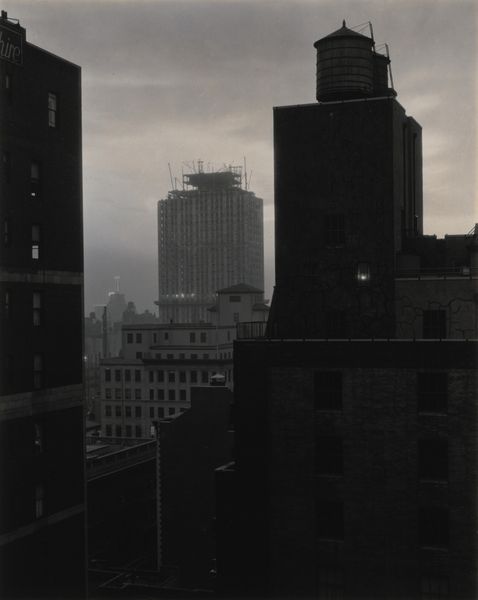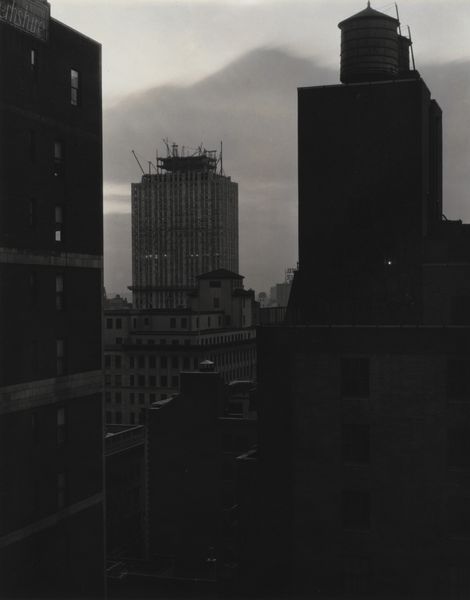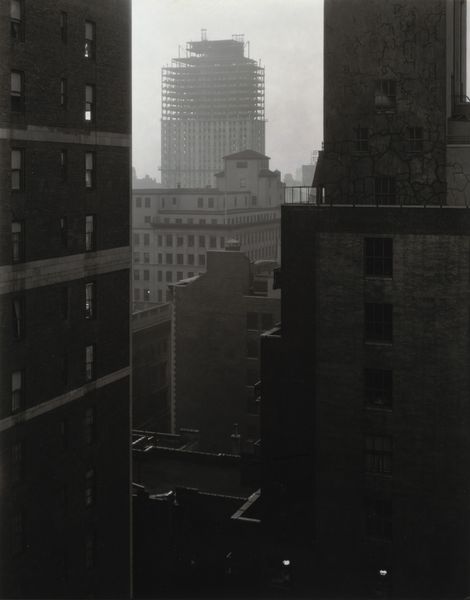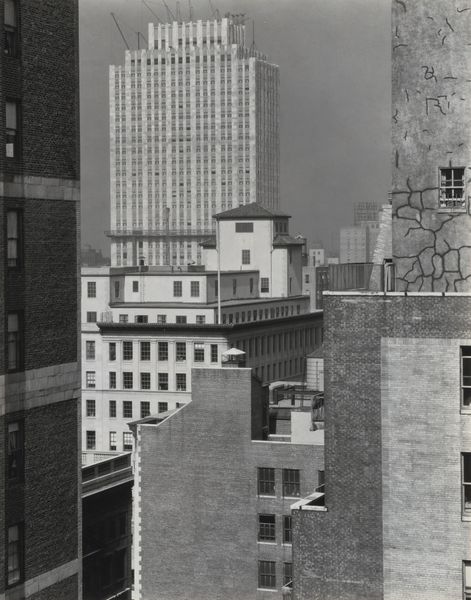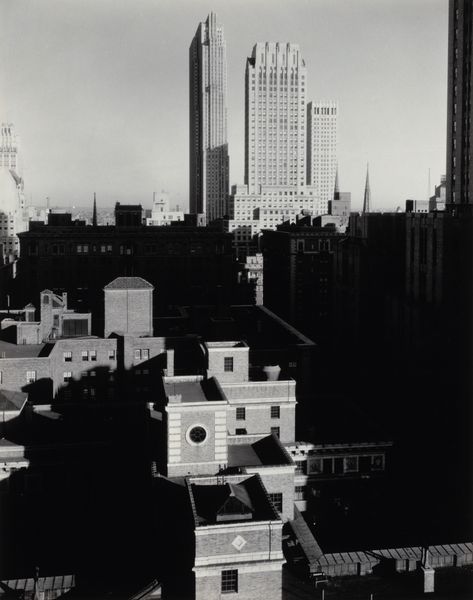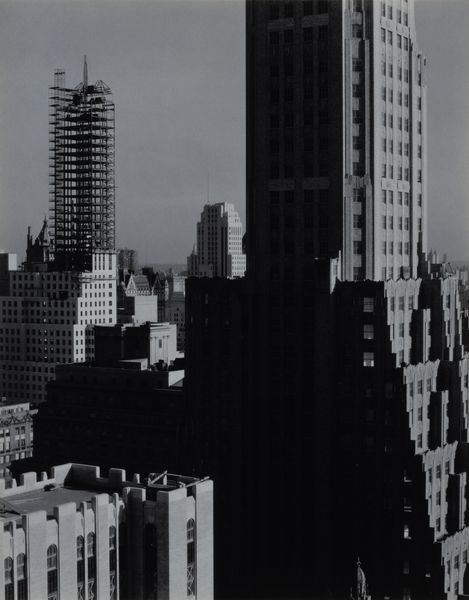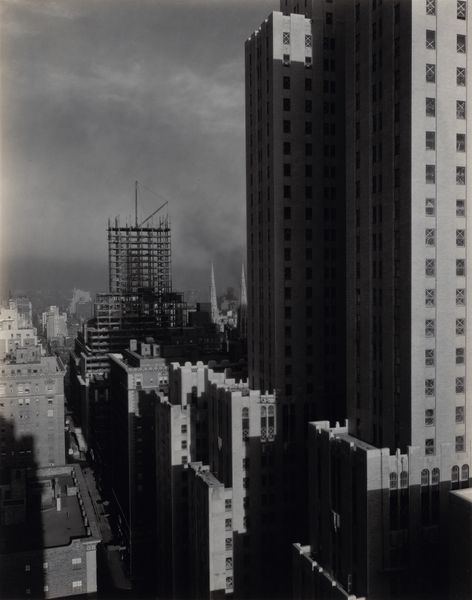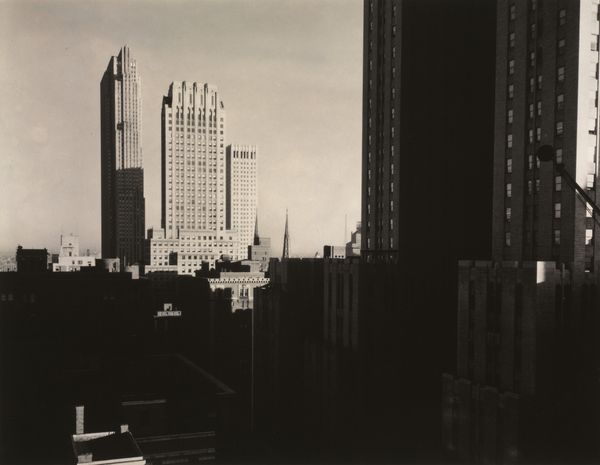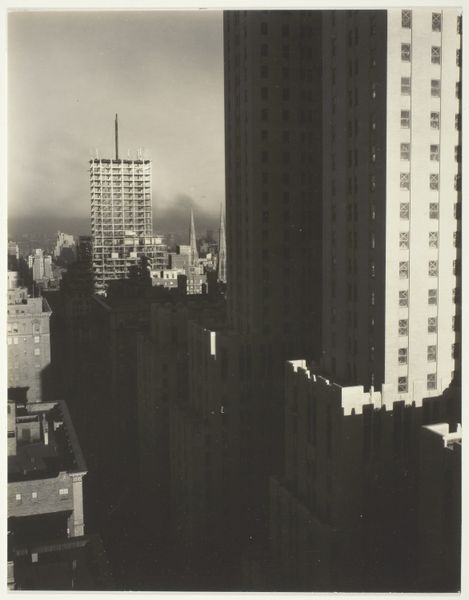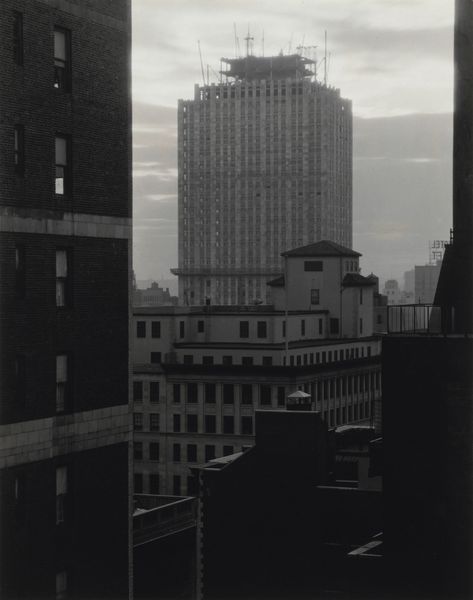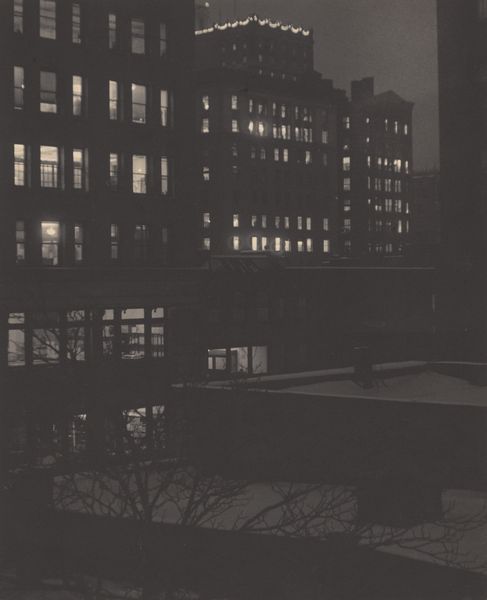
From My Window at An American Place, Southwest Possibly 1932
0:00
0:00
photography, gelatin-silver-print
#
photography
#
black and white
#
gelatin-silver-print
#
monochrome photography
#
cityscape
#
monochrome
#
modernism
Dimensions: sheet (trimmed to image): 23.9 x 19.3 cm (9 7/16 x 7 5/8 in.)
Copyright: National Gallery of Art: CC0 1.0
Editor: We're looking at Alfred Stieglitz's "From My Window at An American Place, Southwest," possibly from 1932. It's a gelatin-silver print depicting a cityscape in monochrome. I'm struck by the framing—almost claustrophobic, yet the central building reaches for the sky. What stands out to you? Curator: For me, it’s the materiality of the buildings themselves and how they embody the era. Think about the specific building materials being used during the interwar period, the rise of steel and concrete, and the sheer labor involved in constructing these towers. It signifies a shift in American industry and urbanization. Consider the consumption and waste generated, the social implications of the working class and their means of existence in a rapidly developing metropolis. Don't you agree? Editor: That's fascinating! I hadn’t considered the labor aspect so directly. So you're seeing this image not just as a picture, but also as a record of the means of production during that period. Is there any visual cue in the photograph that reveals the artist’s stance? Curator: Absolutely, notice how Stieglitz's lens is drawn to both the newly erected skyscraper AND the more traditional buildings. Consider the composition; a juxtaposition between older means and new processes of labor in architecture that comments on its place as both commerce and creation. Think too about photography as a relatively new medium and how it changed the art market during that time. Editor: I see that contrast now. It really makes me rethink how I engage with cityscapes in general. The buildings aren't just backdrops; they're material expressions of society. Thank you for widening my understanding of this work. Curator: It’s the inherent material truth revealed through the artistic process. Thank you.
Comments
No comments
Be the first to comment and join the conversation on the ultimate creative platform.
